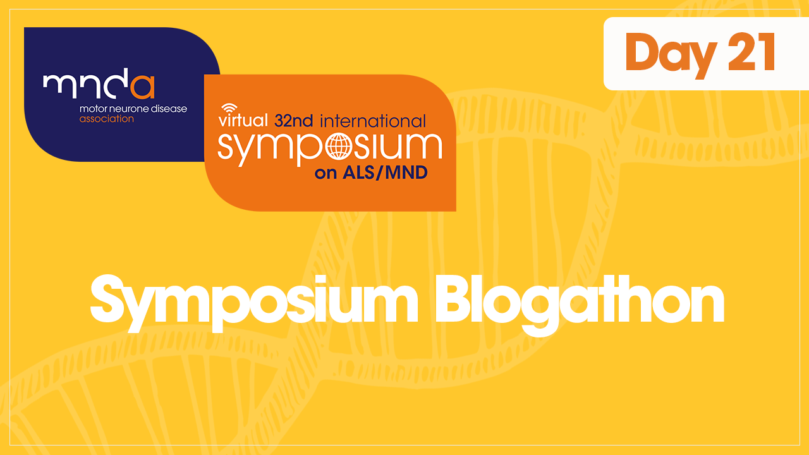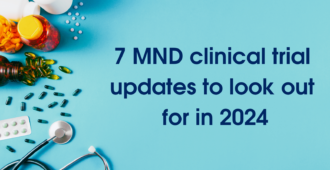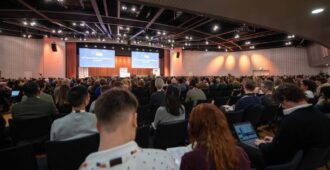This is blog number 21 in our ‘Symposium Blogathon’ – counting down to the 32nd International Symposium on ALS/MND. Numbers in bold green type correspond to the code in the abstract book. Click on the number to be redirected to the full abstract (the page may take a minute to load).
At present, the only drug licensed for the treatment of MND in the UK is riluzole. When first approved, it was thought that riluzole increased life expectancy by around three months. New evidence suggests that riluzole may actually increase life expectancy by as much as 19 months in some people.
RELATED TOPIC
Blog | 28 July 2020 | Research Dev Team
Review of evidence suggests riluzole may lead to extended survival
Another drug, edaravone, has been approved to treat MND in Japan, South Korea, the USA, Canada, Switzerland, China, Indonesia and Thailand, based on a six-month placebo-controlled study in Japanese patients with MND. Edaravone is thought to increase survival by 2-4 months.
Edaravone is not licensed for the treatment of MND in the UK. In May 2018, Mitsubishi Pharma (the developers of edaravone) applied to the European Medicines Agency (EMA) for approval of edaravone to treat MND in the EU. However, in May 2019 they withdrew their application.
Although these drugs have been in use for several years, continuous real-world evaluation is carried out to establish long term effectiveness and side effects.
Currently edaravone is administered intravenously every day for two weeks. A two-week break is then taken before the process begins again. Development of an oral version of edaravone has been underway for several years and this has now moved into clinical trials. This blog covers the journey of oral edaravone from Phase 1 clinical trial to Phase 3 through poster presentations at this year’s Symposium.
Three Phase 1 open-label clinical trials were conducted to compare the pharmacokinetics (PK) and bioequivalence of an oral suspension formulation of edaravone (known as MT-1186) with the already approved intravenous edaravone.
- Study J03 involved 42 healthy subjects or people with MND with or without percutaneous endoscopic gastrostomy (PEG), who received oral edaravone and intravenous edaravone. Assessments included PK parameters, metabolic profiles and elimination pathways for each formulation.
- Study J04 involved nine people with MND and assessed the 24-hour PK of a single dose of oral edaravone.
- Study J05 assessed the 24-hour PK of a single dose or oral edaravone in six people with MND who had PEG tubes.
The results are discussed in poster CLT-03 and provide clinical evidence for the bioequivalence and tolerability of oral edaravone and will help support the development of MT-1186 for people with MND.
Fast forward a little to a Phase 3 open-label safety study of oral edaravone administered over 48 weeks in 185 people with MND. In addition to the primary safety analysis, the study also includes exploratory endpoints such as change from baseline ALSFRS-R scores and time to death, tracheostomy or permanent assisted mechanical ventilation. Interim data after 24 weeks of treatment will be included in the poster presentation (CLT-23).
Of course, not everyone with MND is able to swallow effectively so a Phase 1 study investigating the safety, tolerability and comparative bioavailability of oral edaravone administered orally and via a nasogastric tube (NGT) – a tube that is inserted through the nose, down the throat and oesophagus and into the stomach – in healthy adults has also been carried out.
Thirty-six healthy subjects were randomised into two groups. Administration via NGT was used as a way of modelling a PEG tube because both are positioned in the stomach, are similar in composition, are compatible with oral suspension of edaravone and because only administration via NGT is feasible in healthy adults. Study results will be presented in poster CLT-24.
Poster CLT-32 discusses the design of a Phase 3 open label extension of oral edaravone, which will be open to all participants who complete the original Phase 3 trial and will assess the long-term safety and tolerability of oral edaravone in people with MND.
Intravenous edaravone is, of course, in use in several countries. A drug that has been approved for use to treat a condition is under constant real-world surveillance, evaluating the safety and effectiveness in the population for which it was developed. This is as true for edaravone as any other drug.
In Japan, more than 800 people with MND, who had not yet received edaravone, were enrolled in a surveillance programme and will be followed up for five years. Safety assessments, effectiveness in terms of survival, introduction of tube feeding, gastrostomy and intermittent non-invasive ventilation and ALSFRS-R scores will be monitored. This programme may be useful in understanding longer-term effects of edaravone in the treatment of MND in Japan and across the globe (CMS-20).
Stay informed
If you have come across this blog through the Symposium website, or a general search please subscribe (see top right hand corner of page) and you’ll be notified every time we upload a new article.
You can follow our research account on Twitter. We tweet about up to the minute research and will be tweeting throughout the Symposium – #alsmndsymp #drivingmndresearch
Take a look at the schedule of blogs for November as we continue counting down to the 32nd International Symposium on ALS/MND with our ‘Symposium Blogathon’.
To listen to talks live, take part in the Q&As and visit the live poster sessions, register for the International Symposium now.







